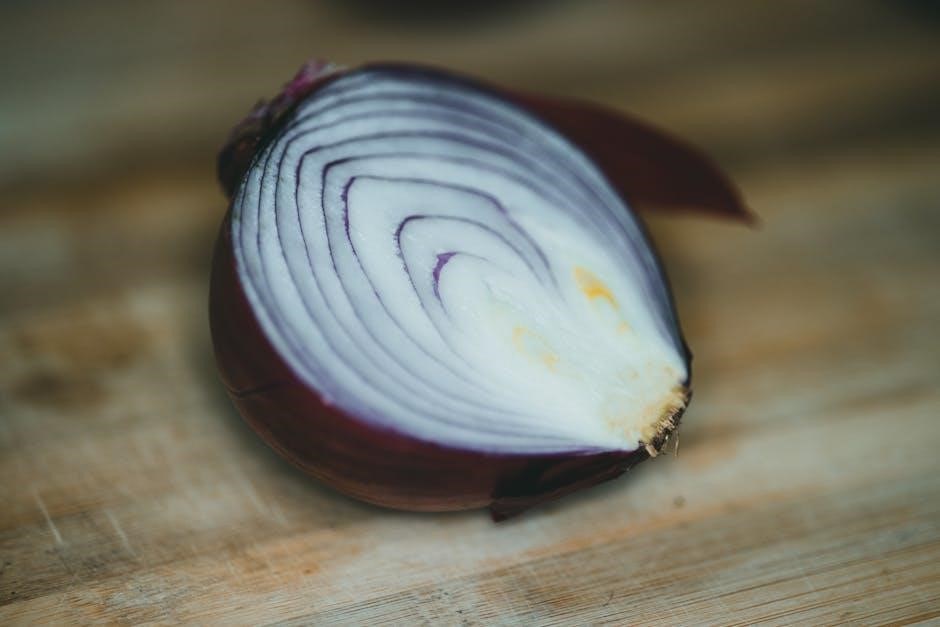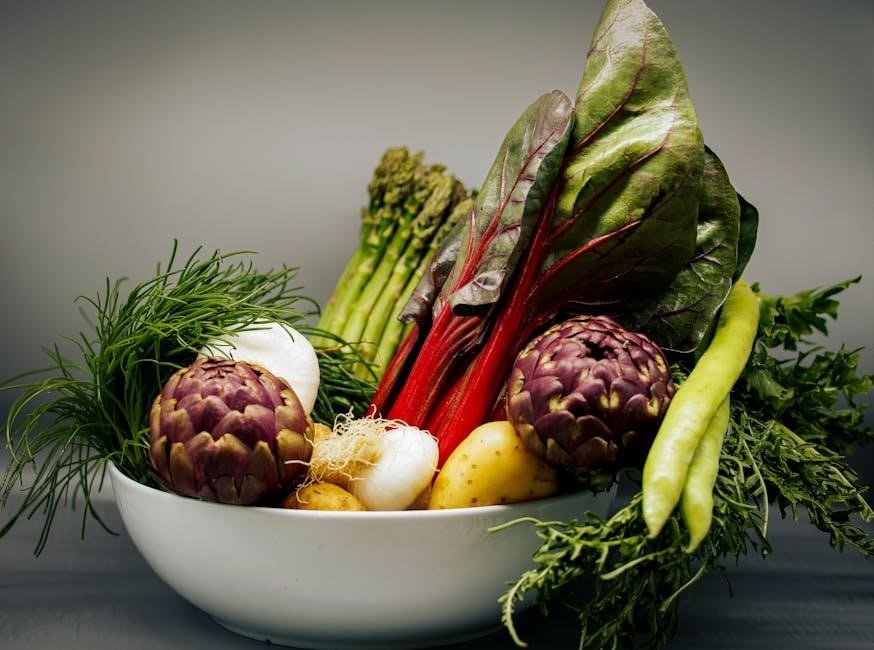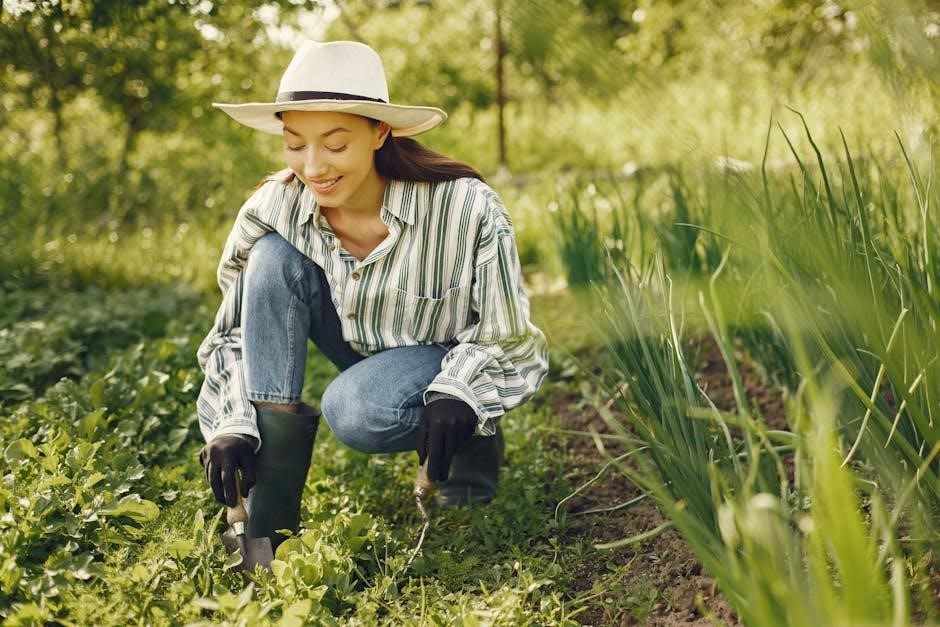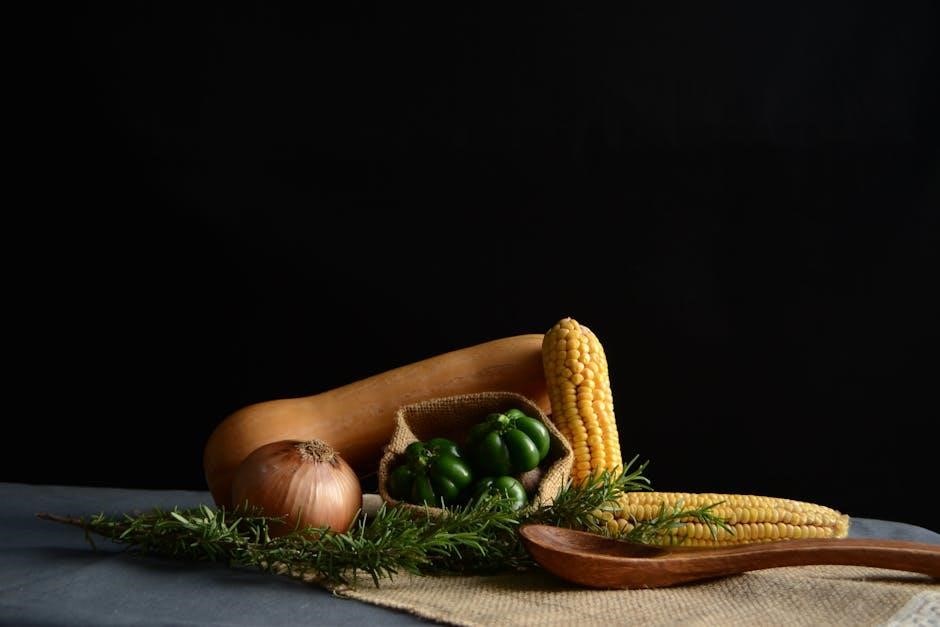Welcome to the Dixondale Farms Onion Planting Guide, your ultimate resource for growing perfect onions; With over a century of expertise, Dixondale Farms provides comprehensive tips and techniques to ensure a successful harvest. This guide covers essential aspects like timing, soil preparation, and proper care to help you achieve the best results.

When to Plant Onions
Planting onions at the right time is crucial for a successful harvest. According to Pam Martin of Dixondale Farms, onions should be planted about six weeks before the average last freeze in your area. This allows the plants to establish themselves before warmer weather sets in. For northern regions, early spring planting is ideal, while southern areas may benefit from late summer to early fall planting. Ensure the soil is workable and not waterlogged. Onions require a long growing season, typically 90 to 120 days before the first frost. Proper timing ensures bulbs have enough time to form and mature. For specific variety recommendations, consult Dixondale Farms’ planting chart to align with your local climate and desired harvest.
- Plant six weeks before the last freeze for spring crops.
- In southern regions, plant in late summer or early fall.
- Allow 90–120 days for bulb formation before frost.

Soil Preparation for Onion Growth
Proper soil preparation is essential for growing healthy onions. Dixondale Farms recommends starting with well-draining, loose soil to promote root development. Spread a quarter to an inch of compost across the bed before planting to enhance fertility and drainage. Onions thrive in slightly acidic to neutral soil, with a pH between 6.0 and 7.0. Test your soil and adjust as needed. Loosen the soil to a depth of 12 inches to allow bulbs to expand. Remove any debris or weeds that could compete with the onions. Avoid overwatering, as onions prefer moist but not soggy conditions. Proper bed prep ensures a productive harvest and sets the foundation for healthy growth.
- Add compost for fertility and drainage.
- Ensure pH is between 6.0 and 7.0.
- Loosen soil to 12 inches deep.
- Remove debris and weeds.
Planting Methods
Dixondale Farms recommends planting onion sets or transplants for optimal growth. Plant sets 1-2 inches deep, spaced 4-6 inches apart. Handle sets gently to avoid damage.

Spacing and Depth
Proper spacing and depth are crucial for successful onion growth. Dixondale Farms recommends planting onion sets 4-6 inches apart to allow sufficient space for bulb development. For green onions, a closer spacing of 2-3 inches is ideal. Plant onion sets 1-2 inches deep, ensuring the base is firmly in contact with the soil. Transplants should be planted at the same depth as they were grown, with the white base just below the soil surface. Adequate spacing prevents overcrowding, which can lead to disease and smaller bulbs. Depth ensures proper root establishment and even growth. Adjustments may be needed based on variety, but following these guidelines will promote healthy, robust onion plants. Proper spacing and depth set the foundation for a bountiful harvest.
Handling Onion Sets
Proper handling of onion sets is essential for successful growth. Upon receipt, remove the plants from the box immediately and store them in a cool, dry place until planting. Avoid soaking the sets in water before planting, as this can lead to rot. Trim any dead or damaged leaves or roots before planting to promote healthy growth. Handle the sets gently to avoid damaging the bulbs or roots, as this can reduce their viability. Plant the sets within a few days of receipt for optimal results. Dixondale Farms recommends keeping the sets dry and cool to prevent sprouting before planting. Proper handling ensures the onion sets remain healthy and ready for planting, setting the stage for a strong and productive harvest.

Fertilization
Fertilization is a critical step in growing healthy onions. Dixondale Farms recommends fertilizing every 2 to 3 weeks after planting to provide essential nutrients for bulb development. For alkaline soils, use ammonium sulfate (21-0-0), while calcium nitrate (15.5-0-0) is ideal for acidic soils. Apply the fertilizer by sprinkling it evenly over the soil surface. Avoid over-fertilizing, as this can lead to excessive foliage growth at the expense of bulb size. Start with a balanced fertilizer at planting time, followed by side-dressing with a high-phosphorus fertilizer to promote root development. Continue with regular applications throughout the growing season to ensure optimal nutrient availability. Proper fertilization practices will result in larger, healthier onion bulbs and a more abundant harvest.
Pest and Disease Management
Monitor your onion plants regularly for pests like thrips and diseases such as powdery mildew. Use neem oil or insecticidal soap for pests and fungicides for diseases. Rotate crops annually to prevent recurring issues and maintain soil health for robust plant resistance.
Common Pests
Onion crops often face threats from pests such as thrips, onion maggots, and aphids. Thrips are tiny insects that feed on leaves, causing yellowing or stunted growth. Onion maggots, larvae of flies, damage bulbs by burrowing into them. Aphids can spread diseases while sucking plant sap. Regular monitoring and early intervention are crucial. Use neem oil or insecticidal soap to control thrips and aphids. For onion maggots, practice crop rotation and apply row covers to prevent egg-laying. Encourage beneficial insects like ladybugs and parasitic wasps to naturally balance pest populations. Prompt action against pests ensures healthy onion growth and maximizes yields. Proper soil preparation and spacing also help reduce pest risks. Regularly inspect plants and treat infestations before they spread to maintain a thriving onion crop.
Diseases
Onions are susceptible to several diseases that can impact yield and quality; Downy mildew, a fungal disease, causes yellowing leaves and a white, cottony growth on the underside. Fusarium basal rot leads to browning and wilting, often due to soil-borne pathogens. Neck rot, another fungal issue, appears as blackened tissue at the bulb’s neck. Proper soil preparation, crop rotation, and avoiding waterlogged soil can prevent these diseases. Ensure good air circulation and plant resistant varieties. Treat infections early with fungicides if necessary. Regularly inspect plants for signs of disease to address issues promptly. Healthy soil and optimal growing conditions reduce the risk of disease outbreaks, ensuring a robust onion crop. Proper sanitation and disposal of infected plants also help maintain garden health. Early intervention is key to saving affected plants and preventing disease spread.
Harvesting Onions
Harvesting onions at the right time is crucial for optimal flavor and storage. For dry bulb onions, wait until the tops naturally yellow and fall over, indicating maturity. Stop watering once the tops begin to yellow to allow the soil to dry. Carefully dig around the plants with a fork or shovel, being careful not to damage the bulbs. Gently lift the onions out of the ground and lay them on the soil surface to cure for 1-2 weeks. This drying process hardens the outer skin, reducing rot during storage. For green onions, harvest when the stalks reach 6-8 inches tall by cutting at the base with scissors or a knife. Store cured onions in a cool, dry, well-ventilated area to maintain freshness. Proper harvesting ensures a bountiful and long-lasting crop. Timing and technique are key to enjoying your homegrown onions year-round.
Storage Tips
Proper storage is essential to maintain the quality and longevity of your onion harvest. Store cured onions in a cool, dry, well-ventilated area with consistent temperatures between 32°F and 40°F (0°C to 4°C). Avoid humid environments, as moisture can lead to rot. Use paper bags, mesh bags, or breathable containers to allow airflow and prevent condensation. Do not store onions in airtight containers or plastic bags, as this can trap moisture and encourage spoilage. Keep onions away from direct sunlight and heat sources. For green onions, store them in a sealed container in the refrigerator to keep them fresh for up to a week. Regularly inspect stored onions and remove any that show signs of sprouting or decay. Proper storage ensures your onions remain flavorful and usable throughout the year.

Choosing the Right Variety
Choosing the right onion variety is crucial for a successful harvest. Dixondale Farms offers a wide selection of onion types, each suited for specific climates and purposes. Consider factors like your location, climate, and desired harvest timing when selecting a variety. Day-neutral and long-day onions are ideal for northern regions, while short-day varieties thrive in southern areas with shorter daylight hours. Sweet onions, like Texas Grano or Vidalia, are perfect for fresh use, while storage onions, such as yellow globe types, are better for long-term keeping. If you’re unsure, Dixondale Farms provides variety charts and expert recommendations to match your needs. Selecting the right variety ensures optimal growth, flavor, and storage potential for your onions.

With the Dixondale Farms Onion Planting Guide, you now have the tools to grow a thriving onion crop. From timing and soil preparation to variety selection and pest management, this guide provides a comprehensive roadmap for success. Remember, proper planning and attention to detail are key to achieving a bountiful harvest. Whether you’re a seasoned gardener or a beginner, following these expert tips will help you overcome challenges and enjoy fresh, flavorful onions. Dixondale Farms, with over a century of experience, has streamlined the process to ensure your efforts yield the best results. By adhering to these guidelines, you’ll not only enjoy the rewards of homegrown onions but also gain a deeper appreciation for the art of farming. Happy growing!



